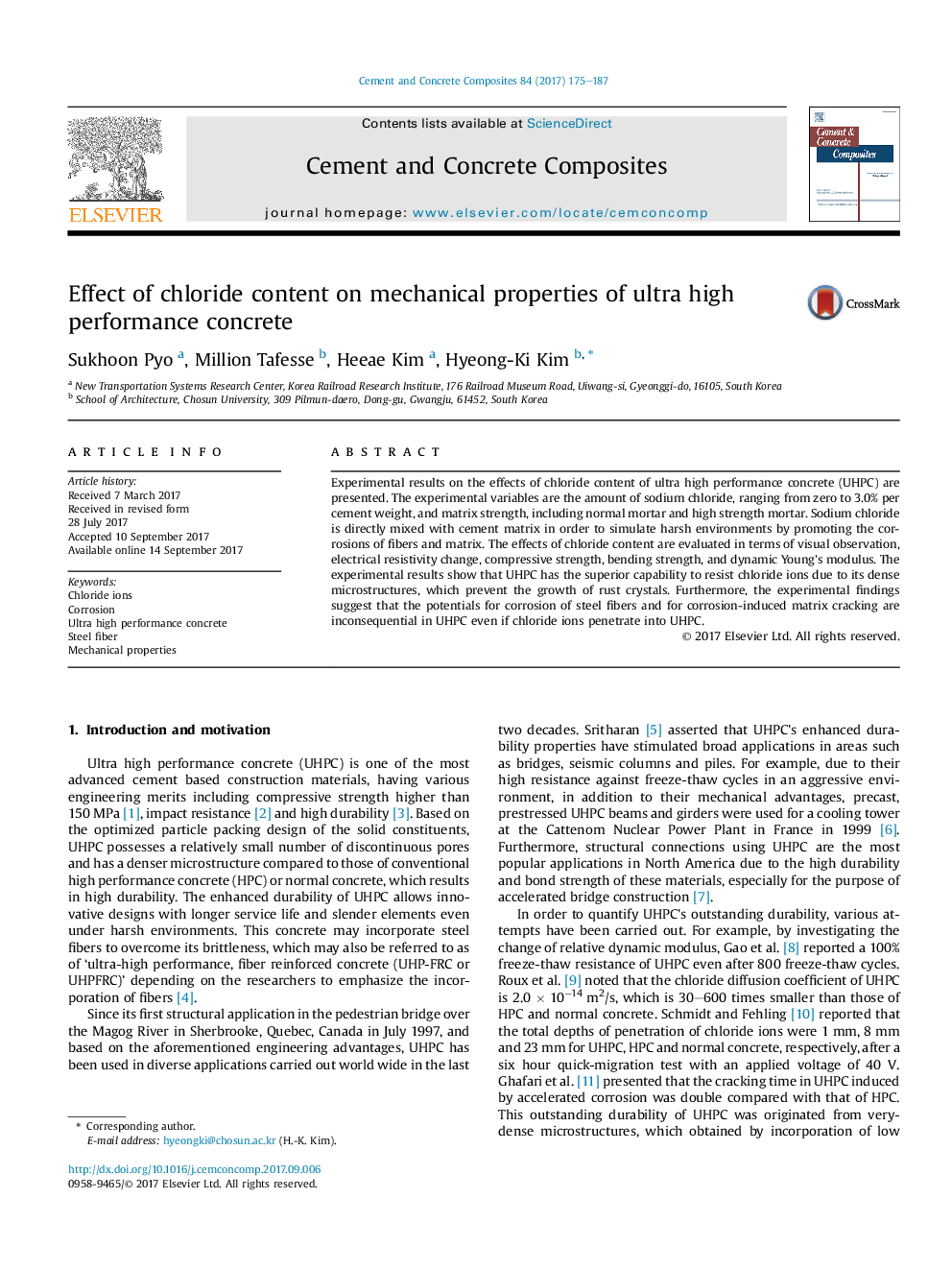| Article ID | Journal | Published Year | Pages | File Type |
|---|---|---|---|---|
| 5436761 | Cement and Concrete Composites | 2017 | 13 Pages |
Abstract
Experimental results on the effects of chloride content of ultra high performance concrete (UHPC) are presented. The experimental variables are the amount of sodium chloride, ranging from zero to 3.0% per cement weight, and matrix strength, including normal mortar and high strength mortar. Sodium chloride is directly mixed with cement matrix in order to simulate harsh environments by promoting the corrosions of fibers and matrix. The effects of chloride content are evaluated in terms of visual observation, electrical resistivity change, compressive strength, bending strength, and dynamic Young's modulus. The experimental results show that UHPC has the superior capability to resist chloride ions due to its dense microstructures, which prevent the growth of rust crystals. Furthermore, the experimental findings suggest that the potentials for corrosion of steel fibers and for corrosion-induced matrix cracking are inconsequential in UHPC even if chloride ions penetrate into UHPC.
Related Topics
Physical Sciences and Engineering
Engineering
Industrial and Manufacturing Engineering
Authors
Sukhoon Pyo, Million Tafesse, Heeae Kim, Hyeong-Ki Kim,
